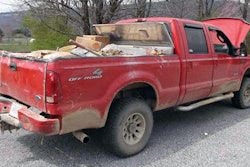While electronic logs generally automate parts of logkeeping and in some ways simplify the rest, they still require direct driver involvement in most duty status changes. As any driver will know, too, turning the entire process over to a device and its interaction with the truck just isn’t possible.
As with paper logs, drivers using electronic logs are in control of all duty status inputs. The exception is the drive line, which functions automatically as specified by the Federal Motor Carrier Safety Administration’s final rule. It’s also the only status the driver will be unable to edit directly through his driver login.
To minimize the need for annotations required with any edit, the long-in-practice habit of “catching up the logbook” by drivers is mostly falling by the wayside. With no pencil to be pushed across paper, as long as the device is operational and open, duty-status changes happen with the simple push of a button in real time.
Edits made by the driver are possible for every line but the drive line, which is locked down since drive time is based on vehicle movement. The drive line can be edited from the administrator’s account to classify an unassigned driving event or drive time as personal conveyance or a yard move.
Any edits made from the administrator account in the back-office login must be certified as accurate by the driver. This occurs through the driver’s user interface of the ELD when the edit is made.
An independent owner-operator may have two separate logins for the system: one as a driver, the other as the administrator. An independent lacking two email addresses may need to get a second one. Some systems require unique addresses to associate with the logins as administrator and driver-user.
When it comes to the look and feel of the user interface that e-log provider companies are required to produce, the ELD final rule leaves plenty of room for variation. It did, however, make these requirements of all ELDs:









